#Protoculture Addicts
Text

Interview with Yoshiyuki Sadamoto (Protoculture Addicts 17, May/June 1992)
23 notes
·
View notes
Text


I scanned the first two issues of the Anime Shower Special magazines. A short lived fanzine spin-off of Protoculture Addicts that compiled anime and manga bath and shower scenes along with some fan art.
NSFW warning, lots of nudity.
0 notes
Text
Belated Anniversaries:
Mecha Press 1991 through 1993


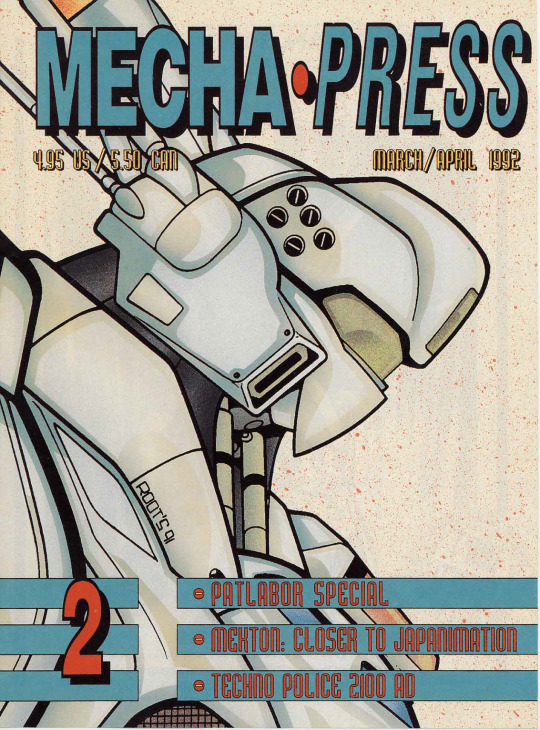

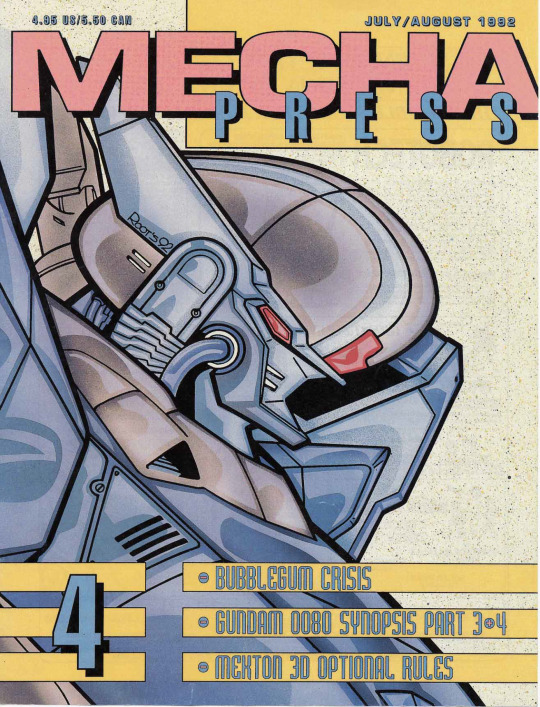



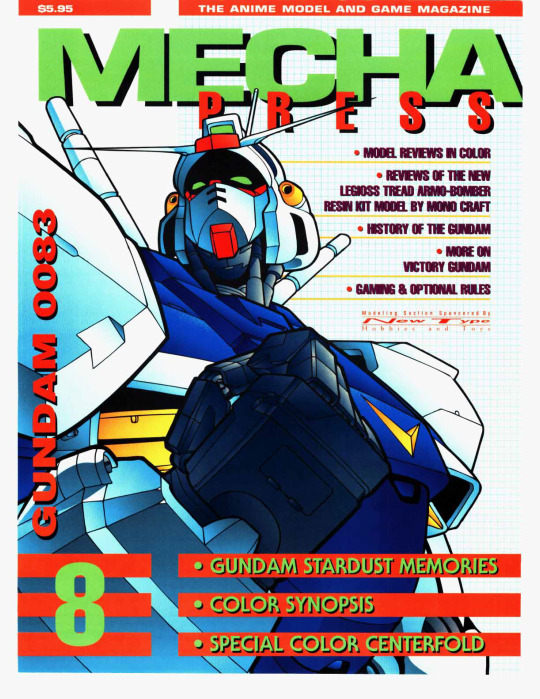
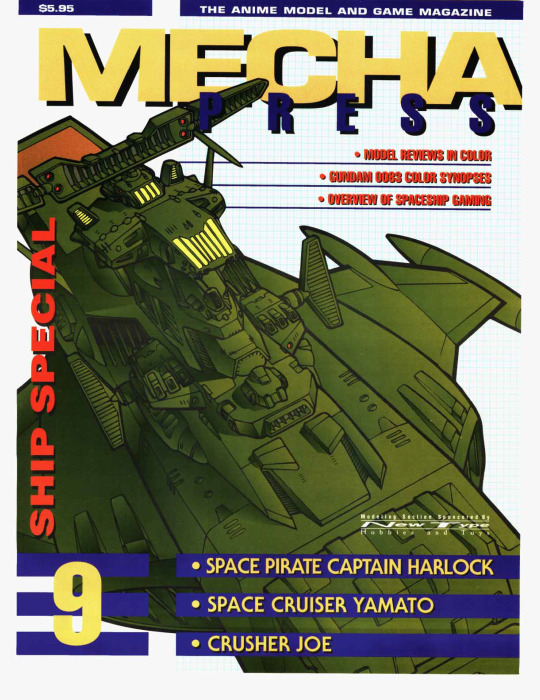

Mecha Press was a sister publication to Protoculture Addicts, focusing on mecha anime after PA had become a general anime magazine (it had started as a Robotech fanzine).
The magazine was a wonderful resource for mecha anima fans (a large portion of western anime fandom in the '80s & '90s) with synopses and in-depth episode guides of various mecha anime series' (that could still be hard to come by in those days) as well as articles on related materials such as manga, novels, models, toys, and mecha-themed tabletop games like Mekton, BattleTech & Mecha!. And I would be remiss if I didn't mention that Mecha Press had excellent technical drawings & illustrations, by artists like Dominique Durocher, John Moscato, Alexandre Racine and Ghislain Barbe (@qosmiq).
The tabletop gaming material in Mecha Press stood out to me in particular, as I was just getting interested in gaming again after a hiatus during my teens. I credit Mecha Press with making me the mecha anime fan and mecha gaming fan that I am today.
Mecha gaming was obviously of great interest to the publishers of Mecha Press (IANVS Publications, later Dream Pod 9) as well, as they began creating their own mecha tabletop RPGs, card games and wargames (first Jovian Chronicles and then Heavy Gear). This interest in games eventually led to the undoing of Mecha Press, as it was discontinued when Dream Pod 9 decided to concentrate on producing tabletop games full time.
(Making this post now because, while looking back at old Dream Pod 9/IANVS Publications material in anticipation of the 30th anniversaries of Jovian Chronicles and Heavy Gear, I realized that I had missed commemorating the 30th anniversary of the publication of Mecha Press, the magazine that led to the creation of Dream Pod 9 and their games.)
#Mecha Press#Mecha#Mecha Gaming#Heavy Gear#Jovian Chronicles#Mekton#BattleTech#Mecha!™#IANVS Publications#Dream Pod 9
81 notes
·
View notes
Text
The Animanga Find Of A Lifetime



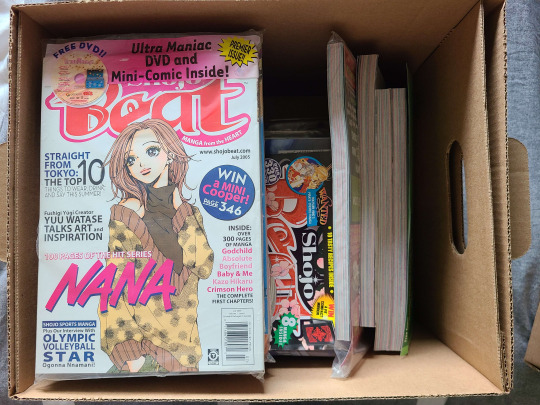

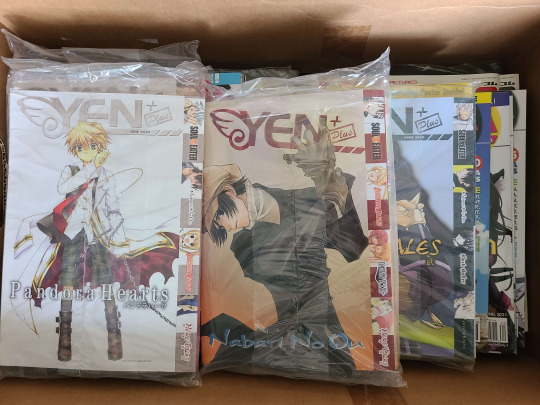
Yeah, I haven't really been too active this week. I've been busy during the week with life and whatnot, but a good chunk of the end of this week has been about this pile of anime and manga magazines. It's no longer just a "pile" of Animerica Extra, but a bonafide Mt. Everest encroaching on 400 issues, so I have lot to explain with just this haul alone.
So, where to begin? An outline is probably best.
This haul is a total of about 311 issues (a little more because of a few duplicates and magazines that aren't strongly related to animanga). That huge number is split across 16 different magazines, 4 of which (combining for 37 issues) are Japanese language.
The full list, in alphabetical order, is: Animage (JP), Animerica, Animerica Extra, Anime USA, AX (JP), AX DVD (JP), Mangajin, Neo, Newtype (JP), NewtypeUSA, OtakuUSA, Pulp, Protoculture Addicts, Shoujo Beat, Super Manga Blast, and Yen+.
Protoculture Addicts and Animerica stand out in the bunch because they together combine for over 100 of the issues in the haul, which is good because they're by far the longest running in the lot.
Speaking of those, let me give a bit of broad history in regards to the magazines.
While the majority are English language, there's actually a pair of them that were created/published outside of the US.
Starting it off, Protoculture Addicts was created in Montreal, and was actually ran as a Robotech Fanzine for about a year or so before becoming a full fledged magazine.
And then there's Neo, the UK based magazine. It's arguably the most interesting ongoing magazine out of the lot (with Otaku/Anime USA being the only others). It's also the only monthly animanga magazine to be currently published in English as OtakuUSA is bimonthly, and AnimeUSA is quarterly.
But that's enough history, what about the insides? For the most part they're relatively standard, but there's not "as many" manga anthology issues in this mountain.
Super Manga Blast, Shoujo Beat (only 9 issues), Animerica Extra (which I now have extras of), Pulp (only 2 issues), and Yen+.
That last one is the most interesting to me purely because of an editorial/column penned by "The Otaku Pimp". Yeah, that's a real thing that appears in that magazine which is incredibly funny to me.
More on the interesting side though is Mangajin, a magazine focused on teaching Japanese through Japanese culture, which of course includes manga. This one is especially interesting because it oftentimes features the only instance of the manga inside being translated to English.
And this is all just the tip of the iceberg. There's an insane amount of information and history in the magazines, and an exciting amount of unknowns with the frankly incredible amount of promotional DVDs that remain attached to so many of these issues.
I just have to get through it all.... which will take a long time. Will certainly be recruiting friends and whoever to help out, so hopefully I won't be doing this for the rest of my life haha
#anime haul#manga haul#anime magazine#manga magazine#viz media#viz manga#viz#dark horse comics#dark horse manga#yen press#anime#manga#anime and manga
24 notes
·
View notes
Text
Looking Back on Protoculture Addicts 15 Years Later
Though its name is little more than a niche footnote today, Protoculture Addicts once commanded a sense of respect and awe within the anime fan community. The publication, which launched in 1987, would go on to become the first large-scale, mainstream anime publication in North America. To this day, it’s still the longest-running English-language anime magazine. And though we’ll never be able to…

View On WordPress
0 notes
Text
Small press Shack stock update 1
I'm opening up an online store soon and here's a look at the current stock of titles available. if interested in any of the books let me know. shipping costs vary.
Small Press Shack comic stock listing (by Company)
36k studios
Tru vibes
# 1 $5
# 2 $5
2000 A.D.
Scarlet Traces
vol. 1 $25
vol. 2 $25
Aam/Markosia
N-Guard # 1 $5
Ablaze
Unsacred
# 7 $5
Unsacred TPB 1 $25
Unsacred vol. 2
# 1 $5
Abstract Studio
Motor Girl # 1 $10
Rachel Rising
# 13 $4
# 14 $4
#15 $4
#16 $4
#17 $4
#18 $4
# 19 $4
# 20 $4
# 21 $4
#22 $4
# 23 $4
#24 $4
# 25 $4
#26 $4
# 27 $4
#28 $4
# 29 $4
#30 $4
# 31 $4
#32 $4
# 33 $4
#34 $4
# 35 $4
#36 $4
# 37 $4
#38 $4
# 39 $4
#40 $4
# 41 $4
#42 $4
Academy Comics
Robotech 2 The sentinels
book 4
# 13 $5
Action Lab
Adventure Finders vol. 2 #1 $5
Princeless
TPB 1 (small ) $80
part 2
# 1 $5
# 2 $5
#3 $5
part 3
# 1 $5
# 2 $5
# 3 $5
#4 $5
TPB $15
part 4
# 1 $5
#2 $5
#3 $5
#4 $5
TPB $15
part 5
#0 $5
#1 $5
#2 $5
#3 $5
TPB $15
part 6
TPB $15
part 7
# 1 $5
# 2 $5
# 3 $5
# 4 $5
# 5 $5
TPB $15
part 8
#1 $5
#2 $5
#3 $5
#4 $5
TPB $15
part 9
TPB $15
Raven : The Pirate Princess
# 1 $5
#2 $5
#3 $5
#4 $5
#5 $5
#6 $5
#7 $5
#8 $5
#9 $5
#11 $5
Action Lab- Danger Zone
Vampblade vol. 3 # 11 $5
ALC Publishing
Works vol. 1 $10
Alpha-Wave Productions
Ben Dunn Shorts
vol. 1 $20
Vol. 2 $40
Derp Dragons
vol. 1 $20
vol. 2 $20
Jenna & Ninja High School TPB $15
Mighty Tiny: Lost Tails TPB $15
Ninja High School: Ultimate Perfect Memory $15
Ninja High School : Salusian Chess TPB $15
Quagmire U.S.A. TPB $20
Silver Cross TPB $15
Small Bodied Ninja High School TPB $30
Swimmer
vol. 1 $15
vol. 2 $15
vol. 3 $15
Tales From Quagmire U.S.A. TPB $20
Tiger-X TPB $20
Zetraman TPB $25
A.M. Works
Athena
# 1 $4
# 3 $4
#5 $5
#8 $5
Antarctic Press
Gold Digger
Gold Digger # 1 (35th anniversary special ) $15
collected gold digger vol. 3 $5
collected gold digger vol.4 $5
collected gold digger vol.6 $5
collected gold digger vol.8 $5
vol. 3 (color series)
# 3 $10
#4 $10
#13 $4
#14 $4
#15 $4
#17 $4
#43 $4
#56 $4
#60 $4
#62 $5
Gold Diger Gold brick # 6 (#'s 76-100) $50
#98 $2
#100 $5
#101 $2(fcbd ed)
#103 $5
#200 $5
#202 $5
#211 $5
#213 $5
#214 $5
#215 $5
#216 $5
#222 $2
#236 $5
#245 $5
#256 $5
#261 $2
#262 $5
#268 $5
#269 $5
#271 $5
#272 $5
#273 $5
#274 $5
#275 $5
#276 $5
#277 $5
GD – 18
# 1 $5
Gold Digger Perfect Memory
# 2 $10
Gold Digger Annual
#5 $4
#10 $4
#15 $5
#16 $5
#20 $5
Peebo Tales
# 2 $4
# 3 $4
#4 $4
Tangent
# 2 $4
Halloween
# 2 $4
#9 $4
Holidays Special
#2
Universe
# 19 $4
X-Mas Special
# 2 $4
#3 $4
#6 $4
#7 $4
#11 $5
#12 $5
Ninja High School
# 3 1/2 $4
#35 $8
#36 $25
#37 $50 (first warrior nun)
#39 $5
#40 $5
#41 $4
#42 $4
#44 $4
#46 $4
#47 $4
#48 $4
#50 $10
#66 $4
#68 $4
#71 $4
#75 $4
#76 $4
#77 $4
#78 $4
#79 $4
#80 $4
#83 $4
#89 $4
#90 $10
#91 $4
#94 $4
#95 $4
#96 $4
#97 $4
#98 $4
#99 $4
#102 $4
#104 $4
#130 $4
#149 $4
#177 (clr) $5
#177 (B&W) $3
#178 $5
Furry NHS
# 1 $50
# 2 $25
Ninjas vs Aliens
# 2 $5
NHS in Color
# 3 $5
#6 $5
NHS Indie Wars vol. 1 $40
NHS V.2
# 1 $5
# 4 $2
#10 $2
#12 $2
Benzine
# 3 $8
Jenna & NHS
# 2 $10
Hitomi & Her Girl Commandoes
#1 $5
part 2
#5 $5
#6 $5
NHS Annual
# 1 $10
#4 $5
#7 $5
#8 $5
#9 $9
#10 $5
#11 $5
#15 $5
Girls of NHS
# 1 $10
#2 $5
#3 $5
#7 $5
NHS/ GD Maidens of Twilight
TPB $10
NOT Ninja High School
# 1 $100
# 2 $100
# 3 $100
Perfect Memory
# 3 $10
# 4 $15
NHS Swimsuit
# 1 $20
#3 $10
#4 $5
#7 (2001) $80 (first art by Dan Mendoza- Zombie Tramp)
Quagmire USA (Dave Matsuoka)
# 1 $5
# 2 $5
# 3 $5
SB NHS
#2 $5
# 3 $5
NHS Spotlight
# 1 $5
Zetraman
# 1 $5
# 2 $5
# 3 $5
part 2
# 1 $5
# 2 $5
Absolute Zero # 1 $20
Airboy: Deadeye
# 1 $5
# 2 $5
# 3 $5
# 4 $5
Albedo #1 $25
Alley oop # 1 $4
B.A.D.A.S.S. # 1 $15
Blackhops: hare Trigger # 1 $10
Box office Poison # 6 $4
Cat Shit One
# 1 $20
Creature # 2 $4
Cybertronian guide # 3 $15
Enter the zombie # 1 $5
Exciting Comics
# 1 $10
# 2 $5
# 3 $5
# 3B $15
# 4 $5
# 5 $5
# 6 $5
# 7 $5
100 page special $15
Gigantor
# 2 $5
# 3 $5
# 4 $5
#5 $5
#8 $5
#12 $5
Gobs # 1 $4
Jungle Comics
# 2 $5
# 2B $15
# 3 $5
H-Bomb # 1 $50
Hit The Beach # 2 $60
Horror Comics
# 2 $5
# 3 $5
How to Draw Manga #8 $10
Kamen America # 1 $15
Knightmare
# 2 $5
# 6 $4
Konnichiwa Kaiju Kun # 1 $5
Legacy
#2 $4
#4 $4
#5 $4
Legend of Sleepy Hollow # 1 $5
Littlest Zombie # 2 $5
Luftwaffe 1946
# 1 $5
# 2 $5
# 3 $5
vol. 2
# 1 $5
# 2 $5
# 3 $5
# 4 $5
# 5 $5
# 6 $5
# 7 $5
# 8 $5
#9 $5
#10 $5
#11 $5
#12 $5
#13 $5
#14 $5
#15 $5
#16 $5
Macabre # 1 $4
Mangazine
vol. 1
# 2 $5
vol. 2
# 7 $5
#11 $50 (First Gold Digger)
#12 $30
#13 $20
#40 $3
Manga Titles (Antarctic)
Change Commander Goku # 2 $5
Gojin # 3 $2
Hurricane Girls # 1 $4
Iczer 1
# 3 $5
# 4 $5
# 5 $5
Stainless Steel Armadillo # 6 $2
Vampire Miyu
Ashcan $5
Mighty Tiny
# 1 $10
# 2 $10
# 3 $10
# 4 $10
# 5 $10
Mischief & Mayhem winter fun # 1 $4
Mythtresses # 1 $5
Neotopia
# 5 $4
Part 3
# 1 $4
part 4
# 3 $4
# 4 $4
Nine lives of Herbert Noble # 1 $2
Patriotika # 1 $5
Pirates vs Ninjas
# 1 $10
# 2 $5
Annual # 1 $5
Planet Comics
# 1B $15
# 2 $5
Plush # 1 $5
Political Comics
Incredulous Trump # 1 $50
Sarah Palin Rogue Warrior # 1 $10
She-Trump # 1 $20
Prince of Heroes
# 1 $5
# 2 $5
part 2
# 1 $5
# 2 $5
Punchline
# 1 (FCBD) $5
# 6 $5
Rags # 7 $5
Robin Hood # 1 $5
Robotech
#4 $5
#5 $5
Vermilion # 3 $5
covert Ops # 2 $5
Shanna The Firehair
# 1 $8
# 1B $15
Shanda The Panda
# 1 $50
# 2 $40
# 3 $30
# 4 $20
# 8 $15
# 10 $10
# 11 $10
# 15 $10
Sidewinder # 1 $5
Steampunk titles
Edge of Empire
# 1 $5
# 2 $5
Girls of Steampunk
2014 $5
Immortal Wings
# 1 $4
# 2 $4
# 3 $4
# 4 $4
Little Match Girl $5
Sherlock Holmes steam Detective # 1 $5
Sherlock Holmes steam Detective :five napoleons # 1 $5
Steam Hunters # 1 $5
Time Lincoln # 1 $5
Time Lincoln TPB $20
super tiny Dragon arms # 1 $5
Teether
# 1 $10
# 2 $5
# 3 $5
# 4 $5
Tigers of Terra
vol. 1 (Mindvisions)
#9 $50
vol. 2
# 1 $20
#2 $20
#4 $10
#5 $10
#8 $5
TPB vol. 3 $50
TPB vol. 4 $50
vol. 3
# 1 $4
# 3 $4
Technical Manual
# 1 $10
# 2 $10
Twilight-X
Interlude
# 6 $10
Ascension
# 3 $10
Quarterly
# 1 $5
X-Tra
# 1 $4
Storm
# 4 $4
# 5 $4
# 6 $4
War
# 1 $4
Ultrabot go go go ! # 1 $5
Valhalla # 1 $10
Velvet Touch # 1 $50
Warrior Nun Areala
vol. 1
# 3 (no CD) $10
vol. 2 (Rituals)
# 1 $10
#2 $10
# 3 $10
# 4 $10
#5 $5
vol. 3 (Scorpio Rose)
# 1 $5
# 2 $5
# 3 $5
# 4 $5
vol. 4
# 2 $5
# 3 $5
#4 $5
# 5 $5
#6 $5
vol.5
# 1 $5
Vol.6
# 4 $5
#5 $5
#14 $5
#15 $5
#16 $5
#17 $5
#19 $5
vol. 7
# 1 $5
# 2 $5
# 3 $5
# 4 $5
# 6 $5
# 7 $5
# 8 $5
# 11 $5
# 13 $5
# 14 $5
# 21 $5
# 22 $5
Annual # 1 $5
Black & White
# 1 $10
# 2 $10
# 3 $10
# 4 $5
# 5 $5
# 6 $5
# 7 $5
# 8 $5
# 11 $5
# 14 $5
# 15 $5
# 17 $5
# 20 $5
Brigantia
# 1 $5
# 2 $5
Frenzy
# 1 $5
# 2 $5
Lillith
# 0 $10
# 2 $4
No Justice # 1 $5
Rheintochter # 1 $5
Serina
# 1 $5
# 3 $5
Shotgun Mary
# 1 $5
# 2 $5
vol. 2
# 1 $5
blood Lore
# 3 $4
#4 $4
Shooting gallery
Silver Cross
# 1 $10
# 2 $8
# 3 $5
Vs Razor
# 1 $10
Zombie Killustrated # 1 $5
Apple Comics
Space Ark # 5 $4
Arcana
Clockwork Girl # 3 $2
Aspen Comics
Potal Bound # 0 $2
Archie Publishing
TMNT : April O'Neil # 3 $8
Avatar Press
Warrior Nun Dora
# 3 $10
Bandai
Witchblade the manga $30
Benitez Productions
Lady Mechanika : Sangre
# 1 $5
# 2 $5
# 3 $5
# 4 $5
Blatant
Marry me
vol.1 $50
Boom Studios
Buffy The Vampire Slayer
# 6 $5
# 7 $5
Buffy: Every Generation # 1 $10
Heartbeat # 1 $5
Kong on Planet of the apes # 1 $5
Mega man Fully Charged # 1 $8
Ronin Island # 1 $10
Ruin World # 1 $5
Unkindness of Ravens # 1 $5
Welcome to Wanderland # 1 $5
Wicked Things # 1 $5
Wynd # 1 $8
Bongo Comics
Mylo Xyloto
# 1 $5
# 2 $5
# 3 $5
# 4 $5
# 5 $5
# 6 $5
Caruso Comics
Crossroads # 1 $4
CPM Manga
Lodoss War : grey witch #4 $2
Lodoss War: Lady of Pharis # 4 $2
Princess Prince
# 1 $10
# 2 $5
Project A-Ko # 2 $5
Cubhouse
Wormworld Saga vol. 1 $15
Dark Horse Comics
Bill & Ted are Doomed
# 1 $5
# 2 $5
# 3 $5
Dominion : no More Noise # 6 $4
Elf Quest final quest # 2 $6
Empowered
vol. 11 $25
soldier of love TPB $20
Soldier of love # 3 $5
High School Hell
# 1 $5
# 2 $5
# 3 $5
# 4 $5
Flaming Carrot
# 18 $4
# 19 $4
# 20 $4
# 23 $4
# 24 $4
# 25 (TMNT) $10
# 27 (TMNT) $10
# 30 $4
Giants # 1 $5
Girl in the Bay # 1 $5
Mystery Science Theatre 3000
Ashcan $10
Shadow Lady
# 21 $4
# 22 $4
# 23 $4
Dangerous Love
# 1 $4
# 2 $4
# 3 $4
eyes of a stranger
# 2 $4
# 5 $4
Super Mario Encyclopedia $40
Devils Due/1First comics
Larks Killer # 1 $5
Double Diamond Press
Hepcats # 7 $4
Dynamite
Army of Darkness vs. Reanimator
# 1A $10
# 1B $10
Nancy Drew # 1B $5
Eclipse Comics
Black Belt Hamsters # 2 $4
Black Belt Hamsters 3D # 4 $4
Cutey Bunny # 5 $10
Fusion # 1 $4
Zooniverse # 1 $4
Entity Comics
Stargate # 3 $4
Stargate: one nation under Ra # 1 $4
Zen intergalactic ninja # 2 $4
Epic Comics
Memories # 1 $5
Eternity Comics
Blade of Shuriken # 3 $4
Eternity triple action # 3 $4
Robotech 2 the sentinels
# 1 $10
# 2 $10
#4 $4
#11 $4
#12 $4
#13 $4
#14 $4
#15 $4
#16 $4
Book 2
# 5 $4
Genesis
# 1 $5
# 2 $5
# 3 $5
# 4 $5
# 5 $5
# 6 $5
Malcontent Uprisings
#8 $4
# 9 $4
wedding special # 1 $10
Tom Corbett space cadet # 4 $4
Eurotica/Mangerotica
Lust vol. 1 $20 (AO)
Ogenki Clinic vol. 1 $25 (AO)
Event Comics
here come the Big people # 1 $4
Fanboy Entertainment
Spellbound # 1 $4
Fantaco
Infinite Punishment #1 $10
Fantagraphics
Critters # 11 $8
GG Studios
Gore # 5 $4
Mediterranea # 4 $4
Grind Studios (all titles are AO)
BDSM & You vol. 1 $15
Changes Omnibus 1 $50
“More” Changes
Vol. 5 $20
vol. 6 $20
vol. 7 $20
vol. 8 $20
vol. 9 $20
Complete Island of Submission TPB $20
Lagomorpha vol. 1 $15
Welcome to Yurika TPB $25
Guerilla
Reform School Ninja Girls # 1 $4
Hasbro
Transformers Animated : Rise of Safeguard $10
Heavy Metal Comics
Taarna # 1 $10
Hyperion
W.I.T.C.H.
Vol. 1 $10
vol. 2 $10
Ianus
Protoculture Addicts # 1 (2nd print) $8
IDW
Angel: After the Fall # 2 $5
Highest House # 1 $10
Jem & the Holograms
# 6 $4
Jem & the HoloGrams: the Misfits
# 1 $4
# 2 $4
Jem & the holograms Annual
# SUB $8
Kill Shakespeare # 3 $4
Sword of Ages # 1 $5
Transformers / Back to the Future # 1A $5
Image
Adventureman # 1 $10
Bitter Root # 1 $10
BlackBird # 1 $10
Dark Fang # 1 $5
Exorsisters # 1 $5
Flaming Carrot Comics Special # 1 $5
Flavor # 1 $10
Ghost Station Zero # 1 $5
Isola # 1 $10
Ludocrats # 1 $5
Marked # 1 $5
Mercy
# 1 $10
# 2 $5
# 3 $5
# 4 $5
# 5 $5
# 6 $5
Monstress
# 23 $5
# 24 $5
Monstress: Talk Stories # 1
NO.1 with a Bullet # 1 $10
Nomen Omen # 1 $5
Normal Man / Megaton Man $5
Prism Stalker # 1 $5
Scales & Scoundrels # 1 $5
Skyward # 1 $10
Strangers in Paradise
# 1 $5
# 8 $5
Twisted Romance # 1 $8
Unnatural TPB 1 $15
Walking Dead TPB 1 $10
Impact Theory
Hexagon # 1 $5
IronCat manga
Dragon Wars # 5 $4
Ironcat Sexy Fruit
I Love You # 3 $5 (AO)
Sepia
# 1 $5 (AO)
# 2 $5 (AO)
JQ Enterprises
Cutey Bunny
# 3 $10
# 4 $10
# 5 $10
JY Manga
W.I.T.C.H. Vol. 19 $20
Keenspot
Dreamless #1 $10
Kenzer & Company
Knights of the Dinner Table # 116 $8
Kitchen Sink Comix
Omaha the Cat Dancer (AO)
# 6 $4
#7 $4
#15 $4
vol. 2
# 3 $2
Lead Publishing
Golgo 13 $5
Legendary
Pacific Rim: Tales from year Zero TPB $15
Marvel
Kookaburra K TPB $15
Lords of Avalon TPB $15
Mangaverse
# 1 $10
# 2 $10
# 3 $5
# 4 $5
# 6 $5
Spider-Man legend of the spider-clan
# 1 $5
# 2 $5
# 4 $5
X-Men Ronin
# 2 $4
# 3 $4
Rise of Ultraman
# 1 sketch cover $100
# 1 $10 (Alex ross)
# 1 $10 (spider-man)
# 2 $5
# 3 $5
Transformers The Movie (86) # 1 $10
Moonstone
Buckaroo Banzai # 1 $10
Narwain Publishing
Tales from a forgotten planet # 1 $10
Powie
Mal & Lot
# 1 $5
# 2 $5
# 3 $5
Printed Matter Comics
Renegade Rabbit # 3 $4
Radio Comix
Ahlea # 1 $4
Edge Guard
# 1 $4
# 2 $4
TPB $20
Furrlough
# 54 $4
# 144 $5
Red Five Comics
Bodie Troll # 2 $4
Dragon Whisperer # 1 $5
Rubiks
1001 # 1 $4
Scout Comics
Kyrra Alien Jungle Girl # 1 $5
Princess Revolution # 1 $5
Seven Seas Manga
Miss Kobayashi's Dragon Maid vol. 9 $15
Shanda Fantasy Arts
In The Zone Special $15
Sirius
Demongate # 3 $4
Soliel
Skydoll
vol. 1 (french) $25
vol. 2 (french) $25
Source Point Press
Dead Duck & Zombie Chick # 1 $5
Skylin # 1 $5
Steeldragon Press
Omaha the Cat Dancer # 2 $20
Stonebot
Legacy of Mandrake the Magician
# 1 $5
# 2 $5
Tapestry
Shades of Gray # 1 $4
Tavicat Comics
Vampurada # 1 $2
Th3rd World studios
Finding Gossamyr
# 2 $5
# 3 $5
# 4 $5
Thoughts & Images
Zell Sword Dancer # 1 $10
Titan Comics
Alisik
# 1 $8
# 2 $8
Blade Runner 2019 # 1A $5
Season of the snake # 1 $20
Under # 1 $20
Tokyopop
Magic Knight Rayearth
vol. 1 $10
vol. 2 $10
vol. 3 $10
Manga Sutra vol. 1 $25
Pixie vol. 2 $5
Twilight Tangents
Soul Chaser Betty vol. 1 $15
Venus Comics
Cheetah pop scream queen # 4 $2 (AO)
Emblem # 5 $2 (AO)
Genus # 21 $25 (AO)
No-No UFO (AO)
# 1 $2
# 3 $2
Verotik
Devilman # 2 $5
Wingbird B&W Bondage $20 (AO)
Viz
A.D. Police vol. 1 TPB $40
Fushigi Yugi
vol. 1 $10
vol. 2 $10
vol. 3 $10
Macross 2
# 4 $4
# 5 $4
Transformers the manga
vol. 1 $35
vol. 2 $35
vol. 3 $35
Wildstorm
Robotech : Love & War
# 4 $4
# 5 $4
# 6 $4
2 notes
·
View notes
Link
Years before Animerica, Protoculture Addicts, and similar magazines, fans would obtain anime news through BBS and text-based digital zines. Read about one of the most popular ones of the day: Anime Stuff!
20 notes
·
View notes
Text
Dead Fandoms, Part 3
Read Part One of Dead Fandoms here.
Read Part Two of Dead Fandoms here.

Before we continue, I want to add the usual caveat that I actually don’t want to be right about these fandoms being dead. I like enthusiasm and energy and it’s a shame to see it vanish.
Mists of Avalon

Remember that period of time of about 15 years, where absolutely everybody read this book and was obsessed with it? It could not have been bigger, and the fandom was Anne Rice huge, overlapping for several years with USENET and the early World Wide Web…but it’s since petered out.
Mists of Avalon’s popularity may be due to the most excellent case of hitting a demographic sweet spot ever. The book was a feminist retelling of the Arthurian Mythos where Morgan Le Fay is the main character, a pagan from matriarchal goddess religions who is fighting against encroaching Christianity and patriarchal forms of society coming in with it. Also, it made Lancelot bisexual and his conflict is how torn he is about his attraction to both Arthur and Guinevere.

Remember, this novel came out in 1983 – talk about being ahead of your time! If it came out today, the reaction from a certain corner would be something like “it is with a heavy heart that I inform you that tumblr is at it again.”
Man, demographically speaking, that’s called “nailing it.” It used to be one of the favorite books of the kind of person who’s bookshelf is dominated by fantasy novels about outspoken, fiery-tongued redheaded women, who dream of someday moving to Scotland, who love Enya music and Kate Bush, who sell homemade needlepoint stuff on etsy, who consider their religious beliefs neo-pagan or wicca, and who have like 15 cats, three of which are named Isis, Hypatia, and Morrigan.
This type of person is still with us, so why did this novel fade in popularity? There’s actually a single hideous reason: after her death around 2001, facts came out that Marion Zimmer Bradley abused her daughters sexually. Even when she was alive, she was known for defending and enabling a known child abuser, her husband, Walter Breen. To say people see your work differently after something like this is an understatement – especially if your identity is built around being a progressive and feminist author.
Robotech

I try to break up my sections on dead fandoms into three parts: first, I explain the property, then explain why it found a devoted audience, and finally, I explain why that fan devotion and community went away. Well, in the case of Robotech, I can do all three with a single sentence: it was the first boy pilot/giant robot Japanimation series that shot for an older, teenage audience to be widely released in the West. Robotech found an audience when it was the only true anime to be widely available, and lost it when became just another import anime show. In the days of Crunchyroll, it’s really hard to explain what made Robotech so special, because it means describing a different world.
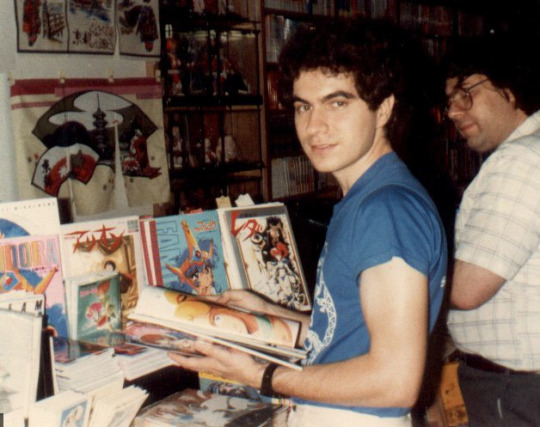
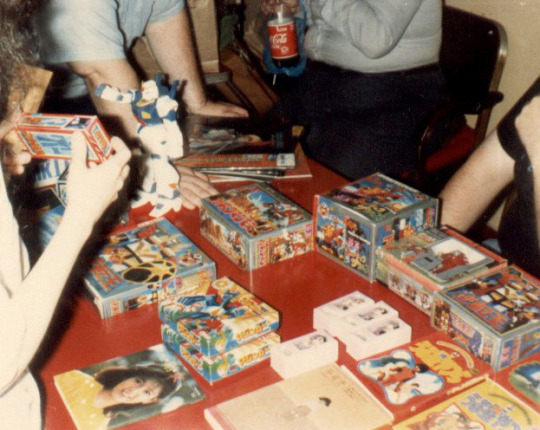
Try to imagine what it was like in 1986 for Japanime fans: there were barely any video imports, and if you wanted a series, you usually had to trade tapes at your local basement club (they were so precious they couldn’t even be sold, only traded). If you were lucky, you were given a script to translate what you were watching. Robotech though, was on every day, usually after school. You want an action figure? Well, you could buy a Robotech Valkyrie or a Minmei figure at your local corner FAO Schwartz.
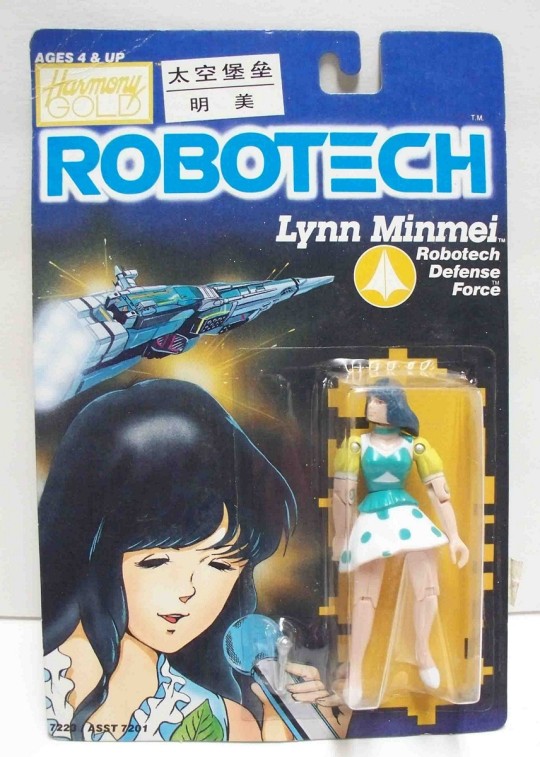
However, the very strategy that led to it getting syndicated is the very reason it was later vilified by the purists who emerged when anime became a widespread cultural force: strictly speaking, there actually is no show called “Robotech.” Since Japanese shows tend to be short run, say, 50-60 episodes, it fell well under the 80-100 episode mark needed for syndication in the US. The producer of Harmony Gold, Carl Macek, had a solution: he’d cut three unrelated but similar looking series together into one, called “Robotech.” The shows looked very similar, had similar love triangles, used similar tropes, and even had little references to each other, so the fit was natural. It led to Robotech becoming a weekday afternoon staple with a strong fandom who called themselves “Protoculture Addicts.” There were conventions entirely devoted to Robotech. The supposed shower scene where Minmei was bare-breasted was the barely whispered stuff of pervert legend in pre-internet days. And the tie in novels, written with the entirely western/Harmony Gold conception of the series and which continued the story, were actually surprisingly readable.

The final nail in the coffin of Robotech fandom was the rise of Sailor Moon, Toonami, Dragonball, and yes, Pokemon (like MC Hammer’s role in popularizing hip hop, Pokemon is often written out of its role in creating an audience for the next wave of cartoon imports out of insecurity). Anime popularity in the West can be defined as not a continuing unbroken chain like scifi book fandom is, but as an unrelated series of waves, like multiple ancient ruins buried on top of each other (Robotech was the vanguard of the third wave, as Anime historians reckon); Robotech’s wave was subsumed by the next, which had different priorities and different “core texts.” Pikachu did what the Zentraedi and Invid couldn’t do: they destroyed the SDF-1.
Legion of Super-Heroes

Legion of Superheroes was comic set in the distant future that combined superheroes with space opera, with a visual aesthetic that can best be described as “Star Trek: the Motion Picture, if it was set in a disco.”
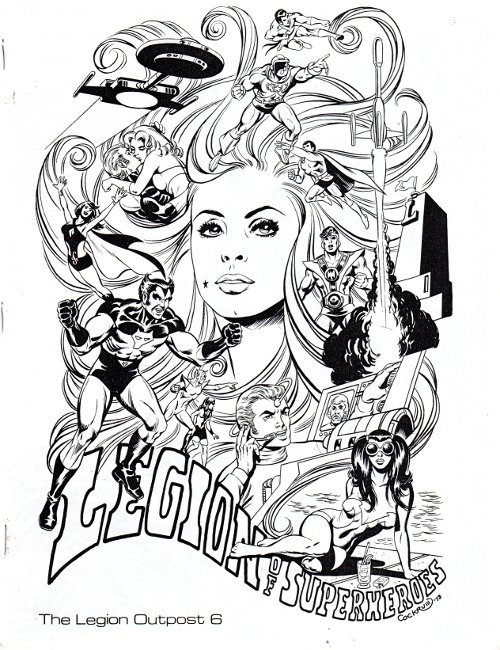
I’ve heard wrestling described as “a soap opera for men.” If that’s the case, then Legion of Super-Heroes was a soap opera for nerds. The book is about attractive 20-somethings who seem to hook up all the time. As a result, it had a large female fanbase, which, I cannot stress enough, is incredibly unusual for this era in comics history. And if you have female fans, you get a lot of shipping and slashfic, and lots of speculation over which of the boy characters in the series is gay. The fanon answer is Element Lad, because he wore magenta-pink and never had a girlfriend. (Can’t argue with bulletproof logic like that.) In other words, it was a 1970s-80s fandom that felt much more “modern” than the more right-brained, bloodless, often anal scifi fandoms that existed around the same time, where letters pages were just nitpicking science errors by model train and elevator enthusiasts.
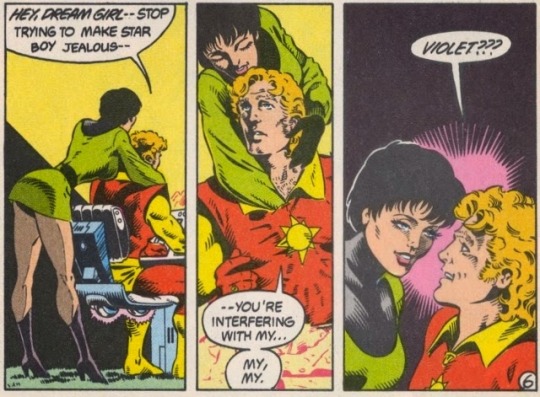

Legion Headquarters seemed to be a rabbit fuck den built around a supercomputer and Danger Room. Cosmic Boy dressed like Tim Curry in Rocky Horror. There’s one member, Duo Damsel, who can turn into two people, a power that, in the words of Legion writer Jim Shooter, was “useful for weird sex...and not much else.”
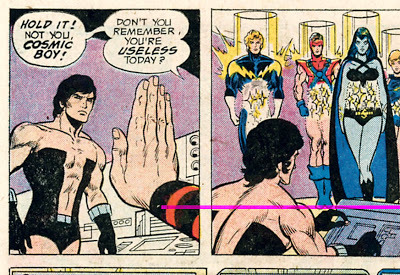
LSH was popular because the fans were insanely horny. This is, beyond the shadow of a doubt, the thirstiest fandom of all time. You might think I’m overselling this, but I really think that’s an under-analyzed part of how some kinds of fiction build a devoted fanbase.
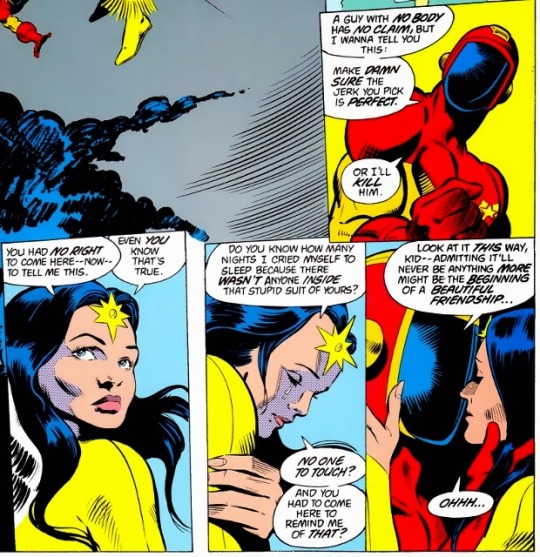
For example, a big reason for the success of Mass Effect is that everyone has a favorite girl or boy, and you have the option to romance them. Likewise, everyone who was a fan of Legion remembers having a crush. Sardonic Ultra Boy for some reason was a favorite among gay male nerds (aka the Robert Conrad Effect). Tall, blonde, amazonian telepath Saturn Girl, maybe the first female team leader in comics history, is for the guys with backbone who prefer Veronica over Betty. Shrinking Violet was a cute Audrey Hepburn type. And don’t forget Shadow Lass, who was a blue skinned alien babe with pointed ears and is heavily implied to have an accent (she was Aayla Secura before Aayla Secura was Aayla Secura). Light Lass was commonly believed to be “coded lesbian” because of a short haircut and her relationships with men didn’t work out. The point is, it’s one thing to read about the adventures of a superteam, and it implies a totally different level of mental and emotional involvement to read the adventures of your imaginary girlfriend/boyfriend.
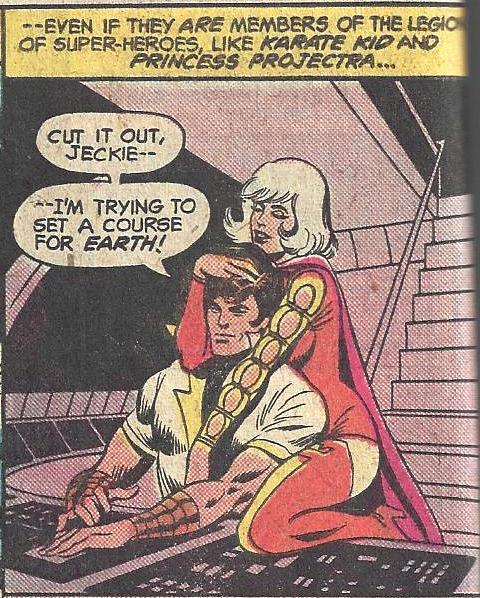
Now, I should point out that of all the fandoms I’ve examined here, LSH was maybe the smallest. Legion was never a top seller, but it was a favorite of the most devoted of fans who kept it alive all through the seventies and eighties with an energy and intensity disproportionate to their actual numbers. My gosh, were LSH fans devoted! Interlac and Legion Outpost were two Legion fanzines that are some of the most famous fanzines in comics history.

If nerd culture fandoms were drugs, Star Wars would be alcohol, Doctor Who would be weed, but Legion of Super-Heroes would be injecting heroin directly into your eyeballs. Maybe it is because the Legionnaires were nerdy, too: they played Dungeons and Dragons in their off time (an escape, no doubt, from their humdrum, mundane lives as galaxy-rescuing superheroes). There were sometimes call outs to Monty Python. Basically, the whole thing had a feel like the dorkily earnest skits or filk-singing at a con. Legion felt like it’s own fan series, guest starring Patton Oswalt and Felicia Day.

It helped that the boundary between fandom and professional was incredibly porous. For instance, pro-artist Dave Cockrum did covers for Legion fanzines. Former Legion APA members Todd and Mary Biernbaum got a chance to actually write Legion, where, with the gusto of former slashfic writers given the keys to canon, their major contribution was a subplot that explicitly made Element Lad gay. Mike Grell, a professional artist who got paid to work on the series, did vaguely porno-ish fan art. Again, it’s hard to tell where the pros started and the fandom ended; the inmates were running the asylum.
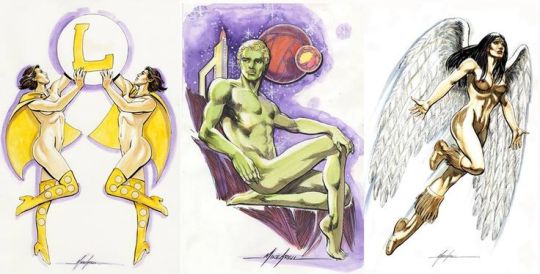
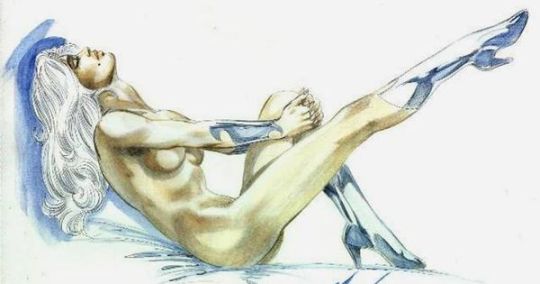
Mostly, Legion earned this devotion because it could reward it in a way no other comic could. Because Legion was not a wide market comic but was bought by a core audience, after a point, there were no self-contained one-and-done Legion stories. In fact, there weren’t even really arcs as we know it, which is why Legion always has problems getting reprinted in trade form. Legion was plotted like a daytime soap opera: there were always five different stories going on in every issue, and a comic involved cutting between them. Sure, like daytime soap operas, there’s never a beginning, just endless middles, so it was totally impossible for a newbie to jump on board...but soap operas know what they are doing: long term storytelling rewards a long term reader.
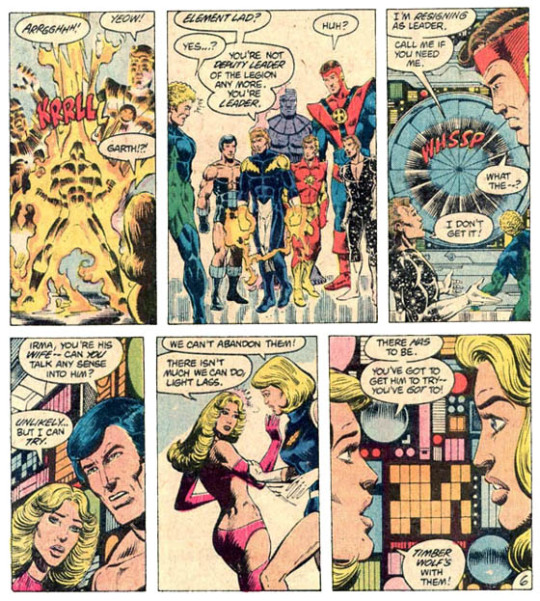
This brings me to today, where Legion is no longer being published by DC. There is no discussion about a movie or TV revival. This is amazing. Comics are a world where the tiniest nerd groups get pandered to: Micronauts, Weirdworld, Seeker 3000, and Rom have had revival series, for pete’s sake. It’s incredible there’s no discussion of a film or TV treatment, either; friggin Cyborg from New Teen Titans is getting a solo movie.
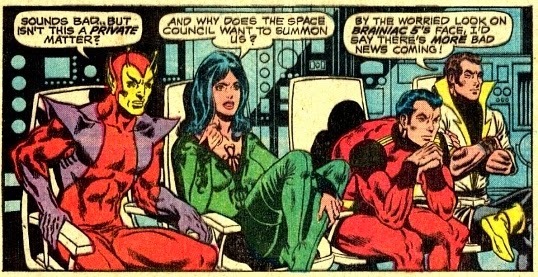
Why did Legion stop being such a big deal? Where did the fandom that supported it dissolve to? One word: X-Men. Legion was incredibly ahead of its time. In the 60s and 70s, there were barely any “fan” comics, since superhero comics were like animation is today: mostly aimed at kids, with a minority of discerning adult/teen fans, and it was success among kids, not fans, that led to something being a top seller (hence, “fan favorites” in the 1970s, as surprising as it is to us today, often did not get a lot of work, like Don MacGregor or Barry Smith). But as newsstands started to push comics out, the fan audience started to get bigger and more important…everyone else started to catch up to the things that made Legion unique: most comics started to have attractive people who paired up into couples and/or love triangles, and featured extremely byzantine long term storytelling. If Legion of Super-Heroes is going to be remembered for anything, it’s for being the smaller scale “John the Baptist” to the phenomenon of X-Men, the ultimate “fan” comic.
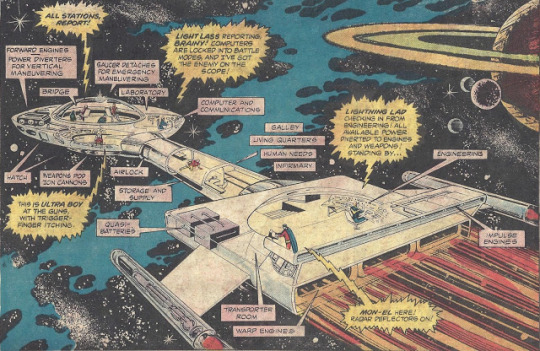
The other thing that killed Legion, apart from Marvel’s Merry Mutants, that is, was the r-word: reboots. A reboot only works for some properties, but not others. You reboot something when you want to find something for a mass audience to respond to, like with Zorro, Batman, or Godzilla.
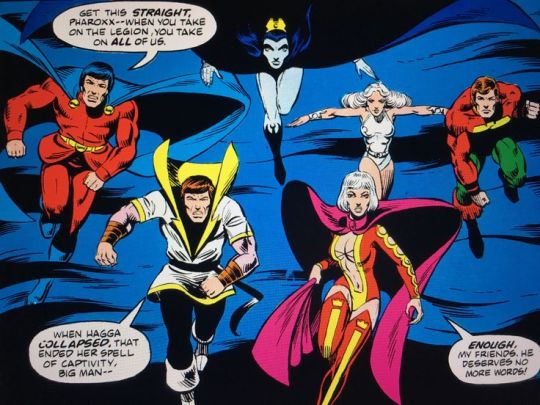
Legion, though, was not a comic for everybody, it was a fanboy/girl comic beloved by a niche who read it for continuing stories and minutiae (and to jack off, and in some cases, jill off). Rebooting a comic like that is a bad idea. You do not reboot something where the main way you engage with the property, the greatest strength, is the accumulated lore and history. Rebooting a property like that means losing the reason people like it, and unless it’s something with a wide audience, you only lose fans and won’t get anything in return for it. So for something like Legion (small fandom obsessed with long form plots and details, but unlike Trek, no name recognition) a reboot is the ultimate Achilles heel that shatters everything, a self-destruct button they kept hitting over and over and over until there was nothing at all left.
E. E. Smith’s Lensman Novels
The Lensman series is like Gil Evans’s jazz: it’s your grandparents’ favorite thing that you’ve never heard of.

I mean, have you ever wondered exactly what scifi fandom talked about before the rise of the major core texts and cultural objects (Star Trek, Asimov, etc)? Well, it was this. Lensmen was the subject of fanfiction mailed in manilla envelopes during the 30s, 40s, and 50s (some of which are still around). If you’re from Boston, you might recognize that the two biggest and oldest scifi cons there going back to the 1940s, Boskone (Boscon, get it?) and Arisia, are references to the Lensman series. This series not only created space opera as we know it, but contributed two of the biggest visuals in scifi, the interstellar police drawn from different alien species, and space marines in power armor.
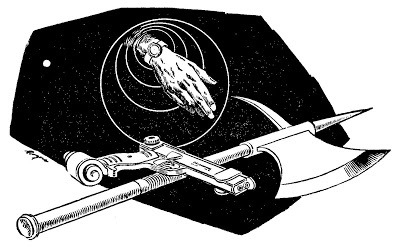
My favorite sign of how big this series was and how fans responded to it, was a great wedding held at Worldcon that duplicated Kimball Kinnison and Clarissa’s wedding on Klovia. This is adorable:
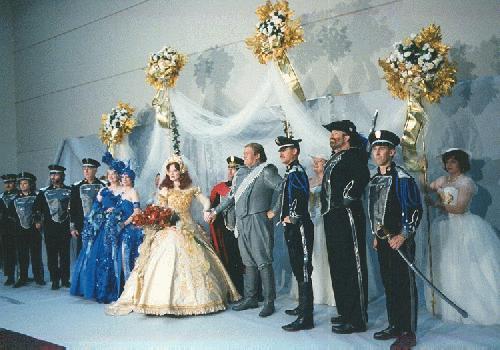
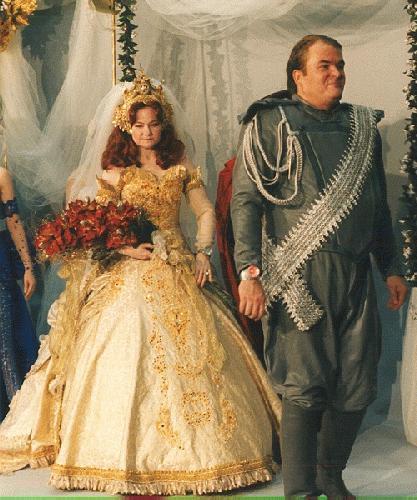
The basic story is pure good vs. evil: galactic civilization faces a crime and piracy wave of unprecedented proportions from technologically advanced pirates (the memory of Prohibition, where criminals had superior firearms and faster cars than the cops, was strong by the mid-1930s). A young officer, Kimball Kinnison (who speaks in a Stan Lee esque style of dialogue known as “mid-century American wiseass”), graduates the academy and is granted a Lens, an object from an ancient mystery civilization, who’s true purpose is unknown.
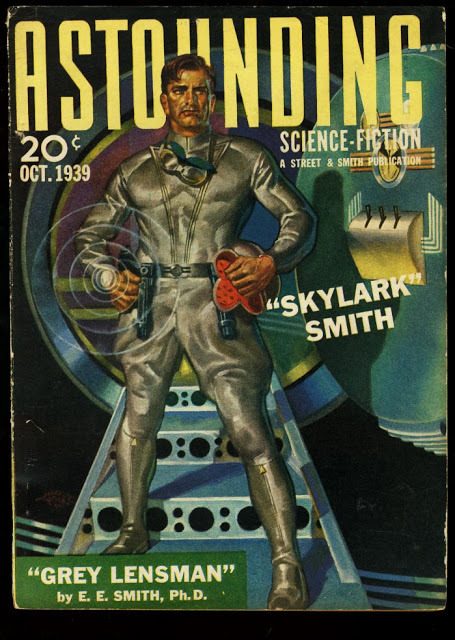
Lensman Kinnison discovers that the “crime wave” is actually a hostile invasion and assault by a totally alien culture that is based on hierarchy, intolerant of failure, and at the highest level, is ruled by horrifying nightmare things that breathe freezing poison gases. Along the way, he picks up allies, like van Buskirk, a variant human space marine from a heavy gravity planet who can do a standing jump of 20 feet in full space armor, Worsel, a telepathic dragon warrior scientist with the technical improvisation skills of MacGyver (who reads like the most sadistically minmaxed munchkinized RPG character of all time), and Nandreck, a psychologist from a Pluto-like planet of selfish cowards.

The scale of the conflict starts small, just skirmishes with pirates, but explodes to near apocalyptic dimensions. This series has space battles with millions of starships emerging from hyperspacial tubes to attack the ultragood Arisians, homeworld of the first intelligent race in the cosmos. By the end of the fourth book, there are mind battles where the reflected and parried mental beams leave hundreds of innocent bystanders dead. In the meantime we get evil Black Lensmen, the Hell Hole in Space, and superweapons like the Negasphere and the Sunbeam, where an entire solar system was turned into a vacuum tube.
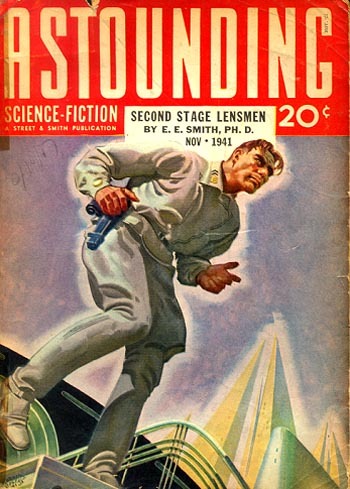
It’s not hard to understand why Lensmen faded in importance. While the alien Lensmen had lively psychologies, Lensman Kimball Kinnison was not an interesting person, and that’s a problem when scifi starts to become more about characterization. The Lensman books, with their love of police and their sexism (it is an explicit plot point that the Lens is incompatible with female minds – in canon there are no female Lensmen) led to it being judged harshly by the New Wave writers of the 1960s, who viewed it all as borderline fascist military-scifi establishment hokum, and the reputation of the series never recovered from the spirit of that decade.
Prisoner of Zenda
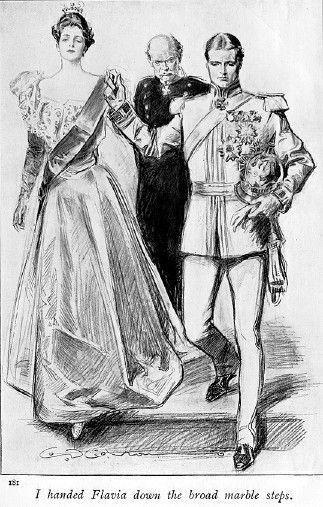
Prisoner of Zenda is a novel about a roguish con-man who visits a postage-stamp, charmingly picturesque Central European kingdom with storybook castles, where he finds he looks just like the local king and is forced to pose as him in palace intrigues. It’s a swashbuckling story about mistaken identity, swordfighting, and intrigue, one part swashbuckler and one part dark political thriller.
The popularity of this book predates organized fandom as we know it, so I wonder if “fandom” is even the right word to use. All the same, it inspired fanatical dedication from readers. There was such a popular hunger for it that an entire library could be filled with nothing but rip-offs of Prisoner of Zenda. If you have a favorite writer who was active between 1900-1950, I guarantee he probably wrote at least one Prisoner of Zenda rip-off (which is nearly always the least-read book in his oeuvre). The only novel in the 20th Century that inspired more imitators was Sherlock Holmes. Robert Heinlein and Edmond “Planet Smasher” Hamilton wrote scifi updates of Prisoner of Zenda. Doctor Who lifted the plot wholesale for the Tom Baker era episode, “Androids of Tara,” Futurama did this exact plot too, and even Marvel Comics has its own copy of Ruritania, Doctor Doom’s Kingdom of Latveria. Even as late as the 1980s, every kids’ cartoon did a “Prisoner of Zenda” episode, one of the stock plots alongside “everyone gets hit by a shrink ray” and the Christmas Carol episode.

Prisoner of Zenda imitators were so numerous, that they even have their own Library of Congress sub-heading, of “Ruritanian Romance.”
One major reason that Prisoner of Zenda fandom died off is that, between World War I and World War II, there was a brutal lack of sympathy for anything that seemed slightly German, and it seems the incredibly Central European Prisoner of Zenda was a casualty of this. Far and away, the largest immigrant group in the United States through the entire 19th Century were Germans, who were more numerous than Irish or Italians. There were entire cities in the Midwest that were two-thirds German-born or German-descent, who met in Biergartens and German community centers that now no longer exist.

Kurt Vonnegut wrote a lot about how the German-American world he grew up in vanished because of the prejudice of the World Wars, and that disappearance was so extensive that it was retroactive, like someone did a DC comic-style continuity reboot where it all never happened: Germans, despite being the largest immigrant group in US history, are left out of the immigrant story. The “Little Bohemias” and “Little Berlins” that were once everywhere no longer exist. There is no holiday dedicated to people of German ancestry in the US, the way the Irish have St. Patrick’s Day or Italians have Columbus Day (there is Von Steuben’s Day, dedicated to a general who fought with George Washington, but it’s a strictly Midwest thing most people outside the region have never heard of, like Sweetest Day). If you’re reading this and you’re an academic, and you’re not sure what to do your dissertation on, try writing about the German-American immigrant world of the 19th and 20th Centuries, because it’s a criminally under-researched topic.
A. Merritt

Pop quiz: who was the most popular and influential fantasy author during the 1930s and 40s?
If you answered Tolkien or Robert E. Howard, you’re wrong - it was actually Abraham Merritt. He was the most popular writer of his age of the kind of fiction he did, and he’s since been mostly forgotten. Gary Gygax, creator of Dungeons and Dragons, has said that A. Merritt was his favorite fantasy and horror novelist.

Why did A. Merritt and his fandom go away, when at one point, he was THE fantasy author? Well, obviously one big answer was the 1960s counterculture, which brought different writers like Tolkien and Lovecraft to the forefront (by modern standards Lovecraft isn’t a fantasy author, but he was produced by the same early century genre-fluid effluvium that produced Merritt and the rest). The other answer is that A. Merritt was so totally a product of the weird occult speculation of his age that it’s hard to even imagine him clicking with audiences in other eras. His work is based on fringe weirdness that appealed to early 20th Century spiritualism and made sense at the time: reincarnation, racial memory, an obsession with lost race stories and the stone age, and weirdness like the 1920s belief that the Polar Arctic is the ancestral home of the Caucasian race. In other words, it’s impossible to explain Merritt without a ton of sentences that start with “well, people in the 1920s thought that...” That’s not a good sign when it comes to his universality.
That’s it for now. Do you have any suggestions on a dead fandom, or do you keep one of these “dead” fandoms alive in your heart?
3K notes
·
View notes
Photo

Listen or download Cosmic Gate - Wake Your Mind Radio 377 for free now!
EDMliveset.com
Cosmic Gate - Wake Your Mind Radio 377
Play Episode Pause Episode
Mute/Unmute Episode Rewind 10 Seconds 1x Fast Forward 30 seconds
00:00 /
RSS Feed
Share
Link
Embed
GENERATE FREE DOWNLOAD
Artist: Cosmic Gate
Show: Cosmic Gate – Wake Your Mind Radio 377
Quality: 320 Kbps 48000 Khz
Genre: Trance
Source: RSS
Discover more Cosmic Gate live sets & radioshows HERE | | Listen to more Wake Your Mind episodes HERE
Cosmic Gate – Wake Your Mind Radio 377 Tracklist
Its three words that turned from a rally cry to their fans into an acclaimed artist album, a social media sensation and most recently a record label. Now, magnifying that meaning once again, this April Cosmic Gate are pleased to announce the latest development in their #WYM marque. Bringing a new level of definition to Wake Your Mind’s sound, prepare yourself for Wake You Mind Radio.
Across 60 minutes, the fully formatted weekly show will feature Nic & Bossi discussing and airing the tracks that have been setting their floors on fire. It’ll also encompass first-listen music premieres and tracks from the deeper side of the WYM psyche. The show will also feature comprehensive info on up-and-coming gigs, Nic & Bossi’s biggest hitting tune of the week and WYMR will also be a first port of call for breaking news on the fast-approaching sixth Cosmic Gate artist album.
01. David Broaders – Don’t Let Me Go (Extended Mix) [Euphonic]
02. Ferry Corsten feat. Lovlee – Our Moon (Protoculture Extended Remix) [Flashover]
03. Spencer Brown – I Was Too Young For 90s Raves (Original Mix) [Factory 93 Records]
04. SOLR – Don’t Let Me Go (Original Mix) [Enhanced]
05. Eli & Fur – Carbon (Original Mix) [Anjunadeep]
06. Eelke Kleijn feat. Diana Miro – You (Patrice Bäumel Remix) [Days Like Nights]
07. Scorz – Ephemeris (Original Mix) [Armada]
08. Cosmic Gate – Feel It (Avira Extended Remix) [Wake Your Mind]
09. Royksopp – What Else Is There (ARTBAT Remix) [Dog Triumph]
10. Pavel Khvaleev – The Giant (Extended Vocal Mix) [Deep State]
11. H3 – Boardwalk (Original Mix) [Addictive Sounds]
12. Fonzerelli – Destiniy (Original Mix) [Magik Muzik]
13. Zack Evans – The Prince And The Sheperd (Original Mix) [Scorchin’]
14. Cosmic Gate – Calm Down (Album Mix) [Wake Your Mind]
The podcast W&W – Rave Culture Radio is embedded on this page from an open RSS feed. All files, descriptions, artwork and other metadata from the RSS-feed is the property of the podcast owner and not affiliated with or endorsed by EDMliveset.com.
Follow us on: Facebook, Twitter, Instagram, Reddit & VK
0 notes
Text

okay but for how easy it is to romanticize old anime fandom, i certainly don't mind not having to pay $40 (about $85 in 2023) a month for four episodes on a videotape
13 notes
·
View notes
Text
Anime in America Podcast: Full Episode 4 Transcript
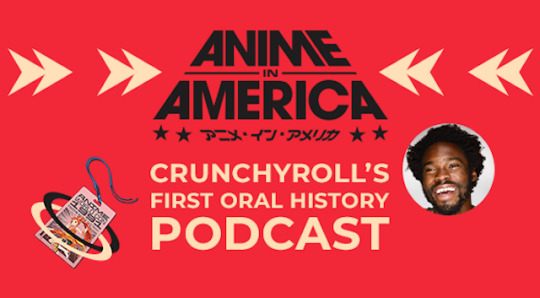
Hi, you may have noticed that this week's Anime in America podcast is all about the 18+ topic of Hentai. *Takes a long drag of a Virginia Slim*. Well, buckle up, because this is the full transcript!
The Anime in America series is available on crunchyroll.com, animeinamerica.com, and wherever you listen to podcasts.

EPISODE 4: YES I DO, HENTAI TOO
Guest: Jacob Grady
Disclaimer: The following program contains graphic material and language not suitable for audience members under the age of 18. Discretion is advised.
[Lofi music]
Just like with most things in anime in america, hentai got its start with Osamu Tezuka. In the twilight of Mushi Production’s years, having already sold the anime that would be localized as Astro Boy and Kimba the White Lion to NBC, Mushi produced a series of three animated films called “Animerama,” A Thousand and One Nights, Cleopatra, and Belladonna of Sadness which were commercial failures that likely contributed to the studio shuttering its doors in 1973. All the same, they were revolutionary for their time as “adult” animation, riding on the heels of Japan’s wave of live action “pink” sexploitatoin films gaining popularity during the same period.
While there are surviving animated hentai from as early as 1932 such as “Suzumifune” the content was illegal in Japan during that period. Imagine their surprise, seeing Japan now. The Animerama films were legally produced for theatrical release and popular consumption containing nudity, erotic themes, and even rape during a period where anime was in its infancy, with Mushi and Toei competing to produce almost exclusively child appropriate programming.
I’m Yedoye Travis, and this is hentai in America.
[Lofi music]
So, back to America. Animerama’s second film Cleopatra was licensed by the American Studio Xanadu and released for limited theatrical screenings. While the movie itself contains erotic themes and a LOT of topless women, Xanadu promoted the film as “porno,” localizing the title as Cleopatra: Queen of Sex. Very creative. It hit theaters April 24th 1972, missing the being “The first X rated animated film to be released in America” by just six days to the American film Fritz the Cat… or that would be the case if Xanadu had actually submitted their film to the MCAA for an official rating. They’d self-assigned the film an X rating, which I don’t think is allowed. I don’t think that’s… I don’t think that’s legal. But they did it to push the pornogapraphy angle.
This ended up backfiring as many customers demanded their money back when they realized they were watching a serious film. An actual movie.
Speaking of which, this seems like a good opportunity to talk a little bit about umm… why? Why hentai? Why- why is it a thing? Anime originally crossed the Pacific out of a need for cheap animation to fill air time on America’s growing menu of TV channels. The demand for porn will always exist but, if you’ll excuse the turn of phrase, we didn’t exactly have any holes that needed filling. Especially after America’s sexual revolution, our proud nation has become one of the biggest porn producers in the world. Unsurprisingly...
Grady: For me, Western pornography it’s like, almost like corney, in a way. What I don’t like about Western pornography is it’s very rarely a realistic scenario. You know, it’s always like “pizza delivery guy comes over and you know ‘Oh! It’s my dick in the box!’” or something like that, and then- as opposed to like a relationship developing and some sort of scenario happening based on that. So the appeal of hentai for me is that I get to invest myself in the story and take part in the story and feel for the characters more than I would in a Western pornography. And it’s very rare for any Western adult material to take that route, where they’re actually creating a plot or a story, and I wish more did because I think that that would be very appealing to a lot of people.
That was Jacob Grady. He’ll become important later.
To add to his, um, his point. Just as anime has found a popular appeal for its unique aesthetic and storytelling, the case is also true for the um… for the not safe for work stuff. Where the U.S. has more of a clear cut separation between what is porngrpahic and what is not, Japan is more of a sliding scale. What would normally be considered pornographic material to an American audience can exist within the context of a greater narrative. I’ll give you an example. So Yasuomi Umetsu’s Kite and Mezzo Forte [trailer for Mezzo Forte plays] were both originally released in the U.S. as grim, high production OVAs [Original Video Animations] featuring battles between assassins, an evil drug ring, and a protagonist overcoming intense childhood trauma. And they all became cult classics in the anime community. [trailer ends]
Later on, both got new Director’s Cut releases that included sex scenes you might find under the “hardcore” tab on certain websites that SHALL NOT be named. PornHub. They were hentai the whole time, but made a name for themselves purely on the production and the story. Whi[laughing]- Which is crazy. Imagine that in American… uh, well, anything. The safe for work cut of Kite is on Crunchyroll right now, actually. So you can check it out and tell me it’s not incredible. And this is just the stuff that involves actual sex. There’s a whole genre of “ecchi” and “eros” content that has sexual themes without including actual sex or even nudity. So while Kite may be an outlier based on the raw quality of its production alongside the, umm, intensity of its adult content, it is not exactly an outlier for the amount of story surrounding the sex. Many hentai have very involved plots spanning from comedy to tragedy, featuring scenarios and characters much more sophisticated than a pizza delivery or a plumbing problem.
When people are telling you they watch hentai for the plot, they… might not be lying. As much as it pains me to say. They might be- I mean they still could be, I don’t know. But the plot definitely exists.
It’s also a much more respected art form in Japan, even outside of contextless black and white photography. Studio SHAFT, one of the most respected and stylistic studios with one of the most ridiculous names in this context, built their reputation entirely on their immediately recognizable visual style. This was an intentional move by founder Hiroshi Wakao who built the studio’s trademark on the work of director Akiyuki Shinbo, who SHAFT hired almost directly out of making hentai under the pseudonym Jyuhachi Minamizawa. SHAFT has Shinbo’s touch all of its work to make sure they keep with his avante garde style. Shinbo himself was also the impetus behind the creation of Puella Magi Madoka Magica.
[Clip from a Puella Magi Madoka Magica commercial plays]
Many hentai have found considerable acclaim for their artist’s merit alone or as genre pieces within the genres of romance, science fiction, and even horror. And we will be touching on a few titles as we go.
[Lofi music]
It wouldn’t be for another 14 years that the first real hentai would make its way to American shores in 1986. Although hentai manga had already been around for a while at this point, no American publishers had bitten quite yet. Localization was still the realm of major studios and broadcast networks, although the proliferation of VHS would allow smaller companies to get into the game with direct video release. The first American license of a manga, First Comic’s release of Lone Wolf and Cub wouldn’t be ‘til the next year.
Instead, the first hentai release in America would be a direct-to-video VHS release of the second ever erotic OVA made in Japan, Cream Lemon. Why the second? I dunno. The first was called Lolita Anime and I’ll leave it at that. Excalibur Films dubbed and localized 3 episodes of the 16-part miniseries and released them into the area behind that black curtain that says “18+” in comic shops and video stores across America under the bizarrely chosen title “The Brothers Grime,” hopefully not to be confused with the children’s anime “Grimm’s Fairy Tale Classics” that came out the next year. The literal next year.
In 1990 the first hentai comic would make its way to comic store shelves in the extremely questionable publication “Anime Shower Special” which was basically a magazine that cut shower scenes out of hundreds of different manga that I am pretty sure it did not have the license or permission to use. It’s Canadian publisher, IANVS, would later become part of Protoculture Inc., which produced one of the earliest anime magazines, Protoculture Addicts. Protoculture would then be acquired by Anime News Network in 2005 so I guess you could say they technically got into hentai. Technically.
And that’s not me shaming them or anything like that, just about every company in anime has touched hentai at some point. Central Park Media had Anime 18, Manga 18, and Be Beautiful Manga labels to print hentai anime, manga, and yaoi manga respectively. Media Blasters got their start with hentai, their first title being Rei-Lan: Orchid Emblem and later created Kitty Media to manage their 18+ products. Then there was ADV’s SoftCel Pictures and RightStuf’s hentai label Critical Mass which is just a visual that… that the imagination takes care of, I’d say.
Legitimate companies dealing in hentai was a big risk, both when it came to American promiscuity laws and the popular misconception that all anime is cartoon pornography. So, there’s that. America’s uh, kinda fucked up. Here’s an example: In 1999, Jesus Castillo, a clerk at Keith's Comics in Dallas, was accused of promoting obscenity for selling an issue of the Demon Beast Invasion manga to an undercover officer. He was fined $4,000 and sentenced to a year of unsupervised probation after the original six-month prison sentence was suspended, which is insane. First of all, the heft of that sentence; but second of all, the levity we have with what we perceive as sexual crimes. It’s a very confusing balance of things. But, you know, it’s 1999 I guess.
So why risk their reputation? I mean, the obvious answer why everyone risks their reputation in America: uh, because it’s profitable. Kitty Media’s president John Sirabella claimed that, by 1998, 30-40% of anime’s total revenue in the U.S. came from hentai. 40%! And it was cheap. It was, it was super cheap. You know, you don’t exactly market pornography with billboards or commercials or expensive activations. So they were spending almost nothing on advertising, but hentai VHS and DVD were among their first products to sell out on the dealers floor at anime conventions every time.
So moving on, in 1993 hentai finally made history in the U.S. Central Park Media’s Anime 18 division [Legend of the Overfiend trailer begins] dubbed and released the now infamous Urotsukidoji: Legend of the Overfiend in limited theaters on March 11th, [Tailer ends] making it the first animated film to receive the MPAA’s NC-17 rating which had just replaced their old X rating three years earlier in 1990. The film would reach a legendary cult status among porn, science fiction, and horror fans alike. It was also umm, a lot of Americans’ first introduction to umm… [whispered] tentacles. You know- you know tentacles. You’re familiar. The squid? [Whispering ends]
Okay.
[Lofi music]
This is unfortunately the part where we talk about tentacles...
To understand tentacles I gotta tell you a little bit about um, about censorship law. This is a, yeah, this is a legal matter. I don’t know what else to tell you, I don’t know how else to prepare you for this. It’s a, it’s a legal matter, so bear with me. I will start by saying tentacles have a long history in Japanese pornography. You may be familiar with the famous “The Dream of the Fisherman's Wife” woodblock print featuring a lady and an octopus doing the thing. It was created around 1814 by none other than legendary Japanese artist Hokusai… you know, the guy who drew that wave that you see everywhere, on all the Uniqlo tee shirts? You know the one. Hokusai’s Wave. If you Google those words, you’ll find it. Anyway, they were far from mainstream but let’s just say they existed in the popular subconscious.
So, when it comes to porn, Japan had and has some pretty specific guidelines requiring what is off-limits. They put a lot less emphasis on scenario and the content of scenes, and instead they focus on the appearance of genitalia. I’m sure you’re familiar, you know they got the whole pixelated mosaic over the, over the junk and the jingles and the jangles, and pretty much anything else goes. This is in stark contrast to America where seeing those parts is basically the point of adult material, but scenario and content of scenes can sometimes get you in trouble. The one where we run into problems most is portrayal of minors. Obviously. That’s uh, obviously it’s fucked up. Japan, on the other hand, has the same age of consent as us but umm… [sigh], man, oo boy, they do not follow that in hentai. I will say no more than that. This has of course led to a very unique relationship between hentai publishers and their American licensors. Some weird conversations, it gets weird.
Often American versions of hentai are LESS censored than those in Japan, with the American distributor receiving the cut before the mosaics are added so you see the original art in all its glory. But then they might have to go in and uh, change some other things, like umm… you know, age. Obviously. A character’s age in anime can be kinda ambiguous sometimes, so they usually get away with changing a reference to class to a reference to like a “college” course, but you know, sometimes scenes would have to be cut out if it didn’t convincingly look like two adults. Which it unfortunately does. Frequently.
Okay, so back to tentacles. The whole censorship thing is a problem in the hentai industry that many young innovators have tried to work around, often using objects reminiscent of uh… of- of the pe- the penis as substitutes. Along came an enterprising creator named Toshio Maeda. His solution to the uh, to the censorship problem was of course, as we have set up for the past couple paragraphs: tentacles. They were alive, they moved around, but they were not dicks. It feels weird to talk about porn this much and not say the word “dick.” I don’t- why am I using so many euphemisms? I’m just gonna say dick, wherever it feels appropriate.
I’m gonna paraphrase from an interview with Maeda in 2002. [Music play throughout] Quote: “At that time pre-Urotsukidoji, it was illegal to create a sensual scene in bed. I thought I should do something to avoid drawing such a sensual scene. So, I just created a creature. His tentacle is not a penis as a pretext. I could say, as an excuse, ‘this is not a penis; this is just a part of the creature.’ You know, the creatures, they don’t have a gender. A creature is a creature. So it is not obscene – not illegal.”
Umm… some points were made. The gender thing I feel like is probably… actually, y’know, y’know, that probably, that probably lines up, actually. Depends on how sentient you believe animals are. I guess PETA would disagree. There is- they have a sex, not necessarily a gender, I guess. Huh. Well, look at me learning.
[Lofi music]
Okay, as far as I can tell, the first manga to actually get an official license and distribution in the U.S. was, much like Overfiend, a hell of an introduction. Prepare yourselves as I speak this next sentence. Bondage Fairies was released by Antarctic Press under their Venus Press imprint in 1994, following the adventures of Pfil and Pamela, a lesbian fairy couple who act as sort of, uh forest police making sure animals don’t… break the forest law? Where Urotsukidoji introduced many Americans to a multitude of new uses for tentacles, Bondage Fairies was a first introduction for many as well, and I hate having to say these two words next to each other, insect beastiality. Also obviously bondage. I don’t know if that was clear in the title.
The ‘90s also saw the first eroge making their way to the U.S., a very popular genre of video games in Japan featuring sexually explicit images, often featuring “visual novel” style gameplay where you navigate through different dialogue choices to reach a number of different branching narrative paths, often to pursue a uh, “happy ending” with one of a number of different female characters, usually with a larger overall narrative. If this is news to you, then you might be surprised to learn you’re already a fan of some of them. Eroge are a pretty common source material for mainstream anime actually, usually with the sexually explicit content removed, obviously. Popular examples are YU-NO, Doukyuusei, Rumbling Hearts, and ummm, yes, the entire Fate franchise. Although that shouldn’t have been hard to guess after the uh, mana transfer scene...
Anyway, the hentai industry was going pretty strong in the ‘90s although that fact was not, it was, you know- it was kept under wraps. A lot of legitimate anime publishers had their hentai labels happily printing, but didn’t exactly want to brag about what proportion of their profits came from porn. Nothing good can last forever, though, because in the mid 2000s when the bubble burst, anime companies started going bankrupt and their hentai licenses along with them.
SoftCel Pictures, which was spun off from ADV, then closed down in 2005 with many of their titles being acquired by RightStuf’s Critical Mass. Central Park Media followed in 2009, many of its licenses getting split between Critical Mass and Kitty Media. The manga side was even worse. Most hentai publishers were about as small an operation as you can imagine. One example, Icarus Publishing, was responsible for the longest running manga anthology in the U.S., called AG. And he did that all by himself. When he fell ill in 2010 he just couldn’t keep it going anymore and he closed down.
The field was narrowing, which was really bad for anyone looking to support the industry because piracy is a lot worse in hentai and all other varieties of porn, because it’s hard to get popular advocacy or any sort of regulatory agency on your side when you’re working with stuff that people pretend doesn’t exist. You know, like what do you look like in a courtroom, just arguing for porn? You know? In the ‘90’s, of course. We’re… [exasperated] moderately more sex-positive these days. I guess.
[Lofi music]
Now all this was until one man changed everything...
Grady: My name is Jacob. I created Fakku while I was in college, it was originally like a fan website, sort of like [how] Crunchyroll originated. And from that we were able to build an audience and prove that there was a market for this type of content outside of Japan. Because before we started doing it officially, there’d been only a few poor attempts to publish hentai legally outside of Japan. I know of all of them, but almost no one does. Because you know, they, that’s how under the radar it was. So with Fakku, we were able to show our partners in Japan and the publishers and the artists most importantly, “hey, you know there’s people willing to support the stuff you’re creating. Manga, anime, comics, games now, we have, but you’re ignoring the market outside of Japan.” And you may have seen scenarios where like a Japanese publisher might block all foreign IP addresses from viewing their website, because they’re like “oh, foreigners are pirates! They’re scum of the Earth, they’re awful.” That was, that was something that we had to deal with early on, to convince these publishers “hey, no. It’s because you forced the market to this- we just want to read your comics, we just want to watch your anime. We just want to fap to this and fap to that; but because you weren’t providing it, you know, people had to find it any way they could. And if you were to provide a means for them to support officially, we think that people would be willing to do that.” So that’s the argument that we made to the publishers when we first signed our first partners, and it’s been going great ever since [Laughs].
The same year Crunchyroll made the switch to a legitimate anime streaming service, Jacob started up his pirate hentai streaming site Fakku, just one of many pirate pages of the era. He’d spend his days going to school and working at a grocery store stocking vegetables thinking about what he’d like the site to look like, and he would spend long nights coding. Just coding. Think about how much coding that goes into all the porn you watch these days. The site kept growing and traffic increased until Jacob started using his student loans to pay for their server cost. It actually got so bad he almost had to shut the site down, but when he relayed this to his followers the community stepped up and donated until he was able to keep the operation running.
Using Crunchyroll as a model, Jacob made early attempts to go legitimate. After building up a large user base, he started reaching out to the license holders of his sites’ content to see if he could buy legitimate rights, but they never replied. Eventually he would leave college to start working at Bioware and step away from Fakku, handing the operations down to his team. It’s hard to say where his relationship with the site may have gone from there, but everything changed when Jacob received a cease and desist letter from the oldest hentai publisher in Japan, Wanimagazine.
Grady: So originally they reached out to us. So when I first went to Japan and started talking to publishers, you know obviously we were completely upfront with the history of Fakku, what we were doing, and where we came from. And they were all on board with it, which was cool. Because at first, you know the first meeting I had I think we, I was invited out there by this big Japanese publisher, and I was just like “man, are they just going to like, arrest me?” But you know, I went out there and I explained my thoughts and they were like “okay, let’s do it.” And I’m like “umm, really?” And they’re like “yeah, let’s do it.” And they signed us our first licenses, and one of the first things I said was “okay, but you gotta understand. America like, we don’t do that censorship stuff, so like all those black bars and mosaics and giant glowing penises and stuff that they have in Japan, like we’ve gotta get rid of that. Is that possible? Can you get us uncensored stuff?” And they’re like “yeah. We can get you uncensored stuff.” And I was like “REALLY?!” And they’re like “yeah.” And it turns out that with the censorship, it’s actually all produced completely uncensored originally, and the publishers will then go and add varying levels of censorship, those black bars, those mosaics, depending on the medium that the comic or anime is being distributed from, because there’s different laws in Japan. So if it’s sold online it will have some level of censorship, if it’s sold in paper it’ll have a different level, and then if it’s sold internationally it’ll have no censorship at all. So they were on board with no censorship, and I was like “okay, awesome,” but like I hate DRM, right? Like I want to be able to download the comics, read them on my iPad, read them on my phone, read them on whatever, I was like “can we get a deal with no DRM requirements at all?” And they were like “okay,” and I was like “what the fuck? Really?!”
Interviewer: Damn!
Grady: Yeah, so like I ended up leaving Japan with honestly the best publishing deal probably any company has ever gotten.”
After they had seen the size of the Fakku community, Wanimagazine surprised Jacob with how receptive they were to the idea of working with him, even allowing a slow transition from pirate site to legitimacy rather than cutting out all his pirated content immediately. In 2014, Jacob made the announcement Fakku was going legit.
Grady: They were totally on board with it, obviously. Because it was like the both of best worlds. When we started removing fan content there were people who were upset, because, you know, it’s hard to convince someone to pay for something that they’ve never paid for before. Like hentai? Like, no one had ever been saying “that thing you’ve been fapping to, those thousands of things you downloaded on to your computer, those are actually like worth money. Like that’s, like some artist created that and he’s like trying to get by in Japan, he’s trying to make a living, he’s trying to survive, and like that thing is his livelihood. So you should pay for that.” So that was an early difficulty for us, to convince people to pay for this stuff.
It was a predictably rocky transition, but Jacob was right on the mark. Once fans knew they had a way to officially source hentai, they were willing to pay up to support the creators… and that was what Jacob really wanted.
Grady: I think that one of the most powerful things about Fakku is our brand. Like I’ve always tried to position it as not a porn company, which sounds weird, but it’s always been important to me to not you know be running a porn company for a few reasons, but like really we wanted to create a brand that was more of a lifestyle brand, where it’s like people want to support you know whatever Fakku’s doing, and right now it happens to be a lot of hentai manga. But you know we also recently as of just a year ago started publishing our first games. And then we got into anime. And then we’re getting into original Western comics. So we’re publishing a few artists from outside of Japan, and having them create original chapters for Fakku, and adult chapters. And then we’re bringing those to Japan and saying “hey, we work with this artist. They want to have their book published in Japan, is that something we can do?” So we’re like almost reverse publishing, you know Western artists in Japan, which is cool. So we’re doing a lot of crazy things.
Jacob did something no one in the industry had done before, pulling hentai out of the dark shadows to build a real community. Fakku isn’t the 18+ print of an official brand, Fakku is the brand. Jacob didn’t treat being a fan of hentai as anything to be ashamed of, but something to celebrate as a community, and the fandom responded. There is a fandom. Need I remind you, there is a fandom. For hentai. And all things anime. Fakku has active social media, hosts convention panels with special guests, industry parties with DJs like Anamanaguchi, art shows, and even custom skateboards. Fakku’s kinda a lifestyle brand that, it turns out, many people are proud to represent… even if it’s in the form of a- of an ahegao t-shirt.
He also never stopped branching out. Since going official, Jacob set up a streaming agreement with Kitty Media, the lone survivor of hentai publishers after the bubble burst and the final resting place of many licenses acquired from its fallen brethren. He also worked to acquire licenses to older visual novel ero games and Fakku even published the first ero guro manga in the west… and that, if you don’t know is like umm… it’s like a portmanteau of erotic and grotesque and umm… my description of the matter ends there. You got Google for that.
Jacob even launched a sub-label for non-pornographic manga called Denpa Books, which I guess is a huge departure from every other company that’s ever done this, and he used that to print niche licenses like the acclaimed Kaiji and ero adjacent works such as Inside Mari, Super Dimensional Love Gun, and even Maeda’s Legend of the Overfiend manga.
Since going legit, Fakku has become massive.
Grady: Like we’ve published ourselves over 1,000 manga artists. We now work with I think seven or eight hentai manga publishers in Japan. Pretty much everyone, we work with in some manner.
So despite all my hesitance to engage in uh, in hentai consumption in general, and across the board, I will say that there is a legitimate audience for it, and you know, whatever is your thing is your thing. And if that’s your thing, there’s a place to consume it, and there’s a rich history behind it. Surprisingly. It’s not just tentacles for tentacles’ sake. It’s a thing that makes sense, unfortunately. You almost wish it didn’t. But it does. It does.
So with that, in conclusion, I leave you… with this: just you know, just like the things you like, and umm maybe, I dunno, for whatever reason do some research and look into why you like those things and why they exist.
This has been Anime in America. I’m your host, Yedoye Travis. Tune into the next one.
Goodbye!
[Lofi music]
Thank you for listening to Anime in America presented by Crunchyroll. If you enjoyed this, please go to Crunchyroll.com/animeinamerica to watch literally NONE of the things we just mentioned!
Special thanks to Jacob Grady from Fakku for joining us. And you’ve heard it before, but please leave us a review and rate the show so more people can discover it, or just share it with a friend.
This episode is hosted by me, Yedoye Travis and you can find me on Instagram at ProfessorDoye, or Twitter @YedoyeOT. Researched and written by Peter Fobian, edited by Chris Lightbody, and produced by me, Braith Miller, Peter Fobian, and Jesse Gouldsbury. Additional research and writing by Mamoudou N’Diaye.

0 notes
Photo

TITAN’S ROBOTECH #1 SELLS OUT, GOES TO SECOND PRINTING!
(July 14, 2017) Titan Comics is pleased to announce that Robotech #1 Cover A by Stanley ‘Artgerm’ Lau has sold out at distributor level and is now going to a second print. This new printing of Issue #1 features a variation on the original cover by Artgerm with Lynn Minmei winking, and hits stores on Wednesday August 23 with issue #2.
On July 26, the story continues as Titan bring Carl Macek's original vision full circle. Taking into account every iteration of the series, this new Robotech #1 casts a fresh eye over classic characters like Rick Hunter, Lisa Hayes, Lynn Minmei, Roy Fokker, Claudia Grant, and Henry Gloval.
Titan's all-new Robotech series returns to Macross Island, where it all began! Brian Wood, Marco Turini and Marco Lesko have crafted a thrilling new tale that’s perfectly accessible to new fans, as well as providing a deeper layer of twists forold-school protoculture addicts!
"We're so excited by the overwhelming response to Artgerm's Robotech cover - and to the series in general,” said Chris Thompson, Brand manager at Titan Comics. “As an old-school fan of the show, nothing makes me happier than to have a healthy new Robotech series that continues the saga. If you missed out or didn't order enough copies then this second print will land alongside issue 2, so everyone can get on board. Protoculture addicts unite!"
First airing in the USA in 1985, Robotech was the gateway to anime for many
fans – capturing their imagination with its epic generational storyline involving war, romance, and, of course, the transforming Veritech fighters that defend the Earth against extra-terrestrial attacks.
Produced by Harmony Gold USA, the original 85-episode series delved into
humanity’s struggle against a series of alien invasions, from the gigantic Zentraedi to the mysterious Invid, battling for control of advanced alien technology that crash-landed on Earth.
Robotech #1 second printing hits stores on August 23. Retailers can order this Stanley ‘Artgerm’ Lau cover by using order code MAY179024. Don’t miss out – get your orders in by July 31.
Fans can find their local comic book stores via: www.comicshoplocator.com
#robotech#artgerm#Stanley Artgerm Lau#Lynn Minmei#minmei#harmony gold#chris thompson#veritech#macross#macross saga#local comic shop#comics#comic books#anime#manga#protoculture#zentraedi#brian wood#marco turini#marco lesko#science fiction#scifi#rick hunter#lisa hayes#claudia grant#gloval#roy fokker#tommy yune
10 notes
·
View notes
Text
Robotech – the iconic ‘80s Sci-Fi anime – returns to comics this July 26 from Titan Comics with a set of special covers by Karl Kerschl – superstar artist of Gotham Academy and Isola!
These five stunning Robotech character spotlight covers are available across all four issues of the series , with an extra 1:10 incentive variant on issue #1 featuring fan-favorite Lynn Minmei.
KARL KERSCHL VARIANT SET:
ISSUE 1 – COVER B: RICK HUNTER VARIANT
ISSUE 1 – COVER G: LYNN MINMEI VARIANT (1:10 INCENTIVE)
ISSUE 2 – COVER B: LISA HAYES VARIANT
ISSUE 3 – COVER B: ROY FOKKER VARIANT
ISSUE 4 – COVER B: CLAUDIA GRANT VARIANT
The all-new Robotech comic series returns to Macross Island, the place where it all began! Writer Brian Wood, artist Marco Turini and colorist Marco Lesko have crafted a thrilling new tale that’s perfectly accessible to new fans, as well as providing a deeper layer of twists for old-school protoculture addicts.
Karl Kerschl Robotech Variant Covers Set Revealed! #comics #Robotech Robotech - the iconic ‘80s Sci-Fi anime - returns to comics this July 26 from Titan Comics…
1 note
·
View note
Text
Titan Comics revealed these at C2E2 but we have them now. We also have some details.
The all-new Robotech comic series returns to Macross Island, the place where it all began! Writer Brian Wood, artist Marco Turini and colorist Marco Lesko have crafted a thrilling new tale that’s perfectly accessible to new fans, as well as providing a deeper layer of twists for old-school protoculture addicts!
First airing in the USA in 1985, Robotech was the gateway to anime for many fans – capturing their imagination with its epic generational storyline involving war, romance, and, of course, the transforming Veritech fighters that defend the Earth against extra-terrestrial attacks.
Produced by Harmony Gold USA, the original 85-episode series delved into humanity’s struggle against a series of alien invasions, from the gigantic Zentraedi to the mysterious Invid, battling for control of advanced alien technology that crash-landed on Earth.
#gallery-0-7 { margin: auto; } #gallery-0-7 .gallery-item { float: left; margin-top: 10px; text-align: center; width: 14%; } #gallery-0-7 img { border: 2px solid #cfcfcf; } #gallery-0-7 .gallery-caption { margin-left: 0; } /* see gallery_shortcode() in wp-includes/media.php */
ROBOTECH #1
Writer: Brian Wood
Artist: Marco Turini
FC • 32pp • $3.99 • On Sale July 26, 2017
Not just another retelling of the Macross saga …
In July, the story continues as we bring Carl Macek’s original vision full circle. Taking into account every iteration of the series, this new Robotech #1 casts a fresh eye over classic characters like Rick Hunter, Lisa Hayes, Lynn Minmei, Roy Fokker, Claudia Grant, and Henry Gloval. Brian Wood and Marco Turini take us back to a Macross Island where *nothing* can be taken for granted.
COVER A: STANLEY ‘ARTGERM’ LAU
COVER B: KARL KERSCHL
COVER C: BLAIR SHEDD ACTION FIGURE
VARIANT
COVER D: MICHAEL DIALYNAS
COVER E: WALTRIP BROS. RETRO
VARIANT
COVER F: BLUE LINE VERITECH SKETCH
VARIANT
COVER G: 1:10 VARIANT – KARL KERSCHL (MINMEI)
#gallery-0-8 { margin: auto; } #gallery-0-8 .gallery-item { float: left; margin-top: 10px; text-align: center; width: 33%; } #gallery-0-8 img { border: 2px solid #cfcfcf; } #gallery-0-8 .gallery-caption { margin-left: 0; } /* see gallery_shortcode() in wp-includes/media.php */
ROBOTECH #1 Interior Pages Look Amazing! Story Details too. Titan Comics revealed these at C2E2 but we have them now. We also have some details.
1 note
·
View note
Text
does anyone have old issues of animerica (not animerica extra) or protoculture addicts they’d be willing to sell to me? Or know where I can find some other than ebay?
0 notes
Text
ROBOTECH – the iconic ‘80s Sci-Fi anime – returns to comics this July 26 from Titan Comics with a set of special covers by Karl Kerschl – superstar artist of Gotham Academy and Isola!
These five stunning ROBOTECH character spotlight covers are available across all four issues of the series, with an extra 1:10 incentive variant on issue #1 featuring fan-favorite Lynn Minmei.
#gallery-0-9 { margin: auto; } #gallery-0-9 .gallery-item { float: left; margin-top: 10px; text-align: center; width: 33%; } #gallery-0-9 img { border: 2px solid #cfcfcf; } #gallery-0-9 .gallery-caption { margin-left: 0; } /* see gallery_shortcode() in wp-includes/media.php */
KARL KERSCHL VARIANT SET:
ISSUE 1 – COVER B: RICK HUNTER VARIANT
ISSUE 1 – COVER G: LYNN MINMEI VARIANT (1:10 INCENTIVE)
ISSUE 2 – COVER B: LISA HAYES VARIANT
ISSUE 3 – COVER B: ROY FOKKER VARIANT
ISSUE 4 – COVER B: CLAUDIA GRANT VARIANT
#gallery-0-10 { margin: auto; } #gallery-0-10 .gallery-item { float: left; margin-top: 10px; text-align: center; width: 33%; } #gallery-0-10 img { border: 2px solid #cfcfcf; } #gallery-0-10 .gallery-caption { margin-left: 0; } /* see gallery_shortcode() in wp-includes/media.php */
The all-new ROBOTECH comic series returns to Macross Island, the place where it all began! Writer Brian Wood, artist Marco Turini and colorist Marco Lesko have crafted a thrilling new tale that’s perfectly accessible to new fans, as well as providing a deeper layer of twists for old-school protoculture addicts.
First airing in the USA in 1985, ROBOTECH was the gateway to anime for many fans – capturing their imagination with its epic generational storyline involving war, romance, and, of course, the transforming Veritech fighters that defend the Earth against extra-terrestrial attacks.
Produced by Harmony Gold USA, the original 85-episode series delved into humanity’s struggle against a series of alien invasions, from the gigantic Zentraedi to the mysterious Invid, battling for control of advanced alien technology that crash-landed on Earth.
ROBOTECH #1 hits stores on July 26 and is available to order now from May PREVIEWS.
To keep up to date with news about Titan’s Robotech comics, follow Titan Comics on Facebook, Twitter or Tumblr.
ROBOTECH #1
Writer: Brian Wood
Artist: Marco Turini
Publisher: Titan Comics
FC, 32pp, $3.99,
On Sale July 26, 2017
Not just another retelling of the Macross saga …
In July, the story continues as we bring Carl Macek’s original vision full circle. Taking into account every iteration of the series, this new Robotech #1 casts a fresh eye over classic characters like Rick Hunter,Lisa Hayes, Lynn Minmei, Roy Fokker, Claudia Grant, and Henry Gloval. Brian Wood and Marco Turini take us back to a Macross Island where *nothing* can be taken for granted.
Karl Kerschl Robotech Variant Covers Set Revealed! ROBOTECH - the iconic ‘80s Sci-Fi anime - returns to comics this July 26 from Titan Comics with a set of special covers by Karl Kerschl - superstar artist of Gotham Academy and Isola!
0 notes